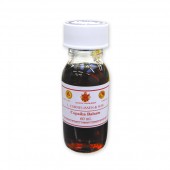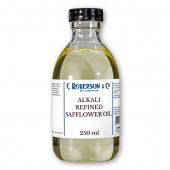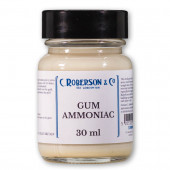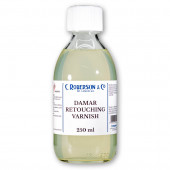Search results for 'layers'
-

Cornelissen Copaiba Balsam
Starting at: £20.80
Copaiba Balsam comes from the South American tree Copaifera landsdorfii. Its primary function is to improve the appearance of paint layers that may have become dull, brittle or sunken upon drying. It is a viscous liquid that may be diluted with turpentine, but which should not be used in painting mediums.
Learn More -

Roberson Safflower Oil
Starting at: £7.70
Safflower Oil is light-coloured, making it suitable for grinding pale pigments. It is still sometimes used as a binder for commercially available paints, although due to its very slow drying time it is best reserved for the final layers of a painting. Compared to Linseed oil, Safflower Oil will give a matte finish.
Learn More -

Roberson Gum Ammoniac
Starting at: £14.00
Natural gum size made to a traditional recipe. Gum Ammoniac is useful for gilding in small areas and, more generally, in detailed gilding. Two applications are needed if gilding on absorbent paper. Raised areas can be developed by using several layers and allowing each layer to dry first. Gum Ammoniac can be reactivated by breathing on the gum surface. Gum Ammoniac comes to us from Asia and is increasingly hard to source. Learn More -

Roberson Poppy Oil
Starting at: £10.20
Poppy Oil is a slightly later addition to the artist's cabinet than Linseed Oil and Walnut Oil. It is generally used as a binder for pale colours, where the warmth of Linseed Oil is not desired. It provides a matte finish and dries very slowly, so we would not advise using it in conjunction with slow-drying pigments or in underpaintings. A paint film produced by Poppy Oil is weaker and softer than that created by Linseed Oil. This is because it contains a smaller percentage of linolenic acid than Linseed Oil; this substance imparts both strength and yellowness to an oil.
Although some of these properties can be perceived as drawbacks, paints made with Poppy Oil generally obtain a "short" or buttery texture without the addition of waxes or other additives, which can be an advantage for certain colours that produce poor consistencies in Linseed oil alone. Sometimes, the addition of a small quantity of Poppy Oil when grinding a tricky or "stringy" pigment in Cold Pressed Linseed Oil can introduce some of benefits of Poppy Oil, without transmitting its negative characteristics.
Paints made with Poppy Oil are particularly suited to "alla prima" working methods, where paint is applied spontaneously. When working in successive layers, Poppy Oil would only be appropriate for the final stages of a painting.
Learn More -

Roberson Retouching Varnish
Starting at: £8.20
Damar resin/white spirit. Rectifies dull areas caused by sinking of paint. Also helps adhesion of succeeding layer. Finish between matt and satin. Unable to send overseas. Learn More



